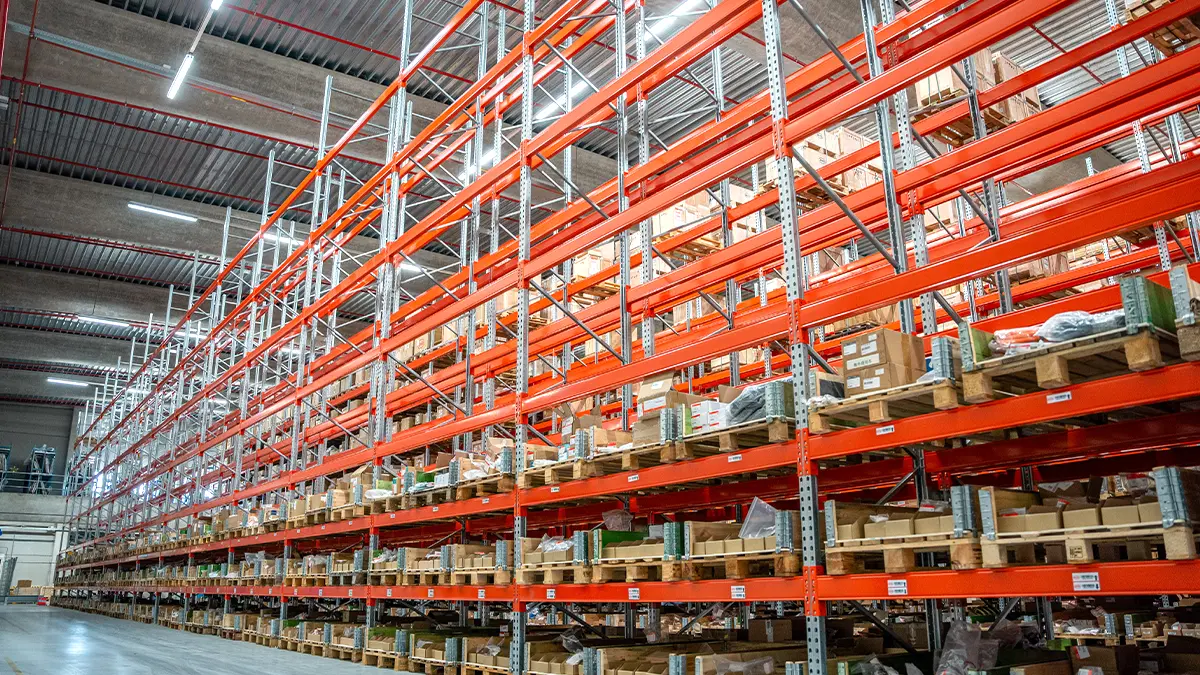The Reorder Point (ROP) concept refers to the stock level of a storage reference that indicates the need for replenishment. In other words, a minimum inventory level, which tells us that a new order for it must be placed with our suppliers to avoid stockout or stock depletion.
The reorder point encompasses in its concept the safety stock level and the delivery times of goods by the supplier, to determine its limit.
Correctly defining the reorder point ensures that demand is met until the order with new product stock is received.
The aim, therefore, is to achieve a balance between the costs of the goods and the risk of stockout through effective management.
Limitations and factors to consider to calculate the Reorder Point
The reorder point starts the warehouse replenishment process, creating a network between current stock, the requested quantity and total available stock when the order is received. If the reorder point is calculated correctly (see below), the right balance of just enough stock will be achieved, without incurring any stock excess or depletion.
To perform the calculation correctly, it will be necessary to monitor certain aspects of the warehouse that could distort the data used for the calculation:
- Correct and strict inventory control, to calculate the ROP with realistic data.
- Updating of stock data ensuring that no imbalances occur, through adequate use of the available warehouse management system.
- If the supplier is internal, order management and delivery times will be more reliable.
- If the supplier is external, close monitoring of the agreed delivery times and order preparation time will be necessary. A direct, smooth and close relationship with the supplier will be key to ensure this is fulfilled.
- With both internal and external suppliers, the time required for the management, acceptance and storage of the goods in the warehouse or distribution centre will need to be considered for delivery times.
Like all models, it has its limitations, which will be greater or fewer depending on whether we define the key value of demand as a fixed value (as in many classical theoretical models) or as a value calculated by probabilities and estimates (more complex calculation, but with more precise and adaptable results).

How do we calculate the reorder point?
The following data is needed to calculate the reorder point:
Safety stock: This is the sufficient inventory level to not compromise warehouse operations and to not incur stockout or stock depletion. This safety stock depends directly on the service capacity of our warehouse, in order to meet the orders received within a specific time frame.
Supplier (internal or external) lead time: This refers to the amount of time that our supplier, whether internal or external, requires from the moment we place our order to complete its processing and shipment. It is a key element in the entire supply chain. We will need to take into account the different lead times if we work with different suppliers, as this will directly affect the reorder point calculation and may require calculating an ROP for each supplier.
Expected consumption or demand: It is the estimated consumption of or demand for a specific item in a specific time frame, generally measured in days. This estimate is one of the most complex elements to calculate, and as previously mentioned can be defined with a classical theoretical model or with probabilistic calculations.
These variables are used to define the formula to obtain the reorder point (ROP), according to which:
Reorder Point (ROP) = Safety Stock + (Supplier lead time x Expected consumption)
The reorder point must ideally be calculated and continuously checked to take into account changes in levels of consumption or demand, and the differences between the types of products, although there are companies that also do this weekly or even monthly.
The aim with the calculation of this point is to find the level that balances the risk of stockout against the cost of acquiring and storing the products.

Practical example of calculating the reorder point
To clearly illustrate the calculation of the reorder point based on the above formula, we propose the following simple practical example:
Let us suppose that the fictitious company SUPERCHAIR, dedicated to the distribution of office chairs through online selling has a daily demand for 200 units, 7 days a week, and its supplier has a lead time of 4 days and a safety stock level of 50 chairs.
Based on these data, the reorder point calculation would be:
Reorder Point (ROP): 50 + (4x200) = 850
In other words, the company SUPERCHAIR will have to place a new order for chairs with its supplier when it only has 850 units of chairs left in its warehouse stock; with this figure the company will be able to meet product demand while optimising times and without incurring extra costs.




